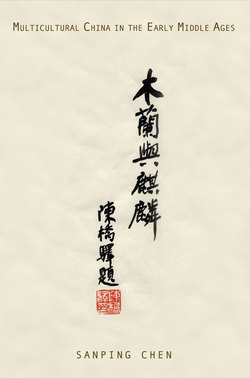Multicultural China in the Early Middle Ages

Реклама. ООО «ЛитРес», ИНН: 7719571260.
Оглавление
Sanping Chen. Multicultural China in the Early Middle Ages
Отрывок из книги
ENCOUNTERS WITH ASIA
Victor H. Mair, Series Editor
.....
For the era under examination, namely the first 150 years of the Tang, one of the key elements in the succession struggle was various imperial guard units. This in my view was the cause for the Xuanwu Gate's prominence in these coups during the period. For blood tanistry struggles in an agrarian society, Fletcher has introduced the term “surrogate nomads” for the equivalent of tribes and tribal military elites who would fight out the succession wars on the Steppe. For the early Tang, the “surrogate” qualifier would seem almost superfluous, because the ranks of imperial guards were filled with people not just of nomadic origin but literally fresh from the Steppe. A good example was the three hundred Türk troops Prince Jiancheng planned to use to attack Li Shimin's residence (Xin Tang shu 79.3542).61 In fact at times these figures were said to be so numerous that they filled half of the positions at court (ZZTJ 193.6098), which were apparently mostly military. Many were actually mentioned or even named in succession struggles. Li Duozuo, a prominent imperial guard of Mojie ethnicity (widely regarded as the predecessor of the Manchu), on whom was bestowed the royal family name (Jiu Tang shu 109.3296–97), was a typical case. This was hardly the best indication of a “native” dynasty, though the standard records have almost certainly suppressed or played down as much as possible the role of these “Barbarian” figures in setting the course of Chinese history.
Another important dimension of the unmistakable Turco-Mongol trait of the early Tang was its continued military and political expansion in almost all directions. Again a great number of non-Hàn ethnic generals and naturally an even greater number of such troops were used in this endeavor. In fact, the Tang ethnic generals have became a fecund study subject for modern historians.62 These studies demonstrate that the phenomenon was a rather unusual case in Chinese history. That is, if we exclude the Mongol forces in the Qing's march into Central Asia, an exact repetition of the Tang's advances one millennium earlier. As the imperial guards actively participated in these campaigns, their prestige at the court and their role in the succession struggle continued. The ancient Orkhon inscriptions mentioned explicitly that the Türk troops had fought the wars for the Tabgach/Tuoba emperors.63 But this complaint masked the other side of the coin: the important role of these Türk generals and soldiers in choosing the very emperors they would serve under as well as the grossly out of proportion positions they filled at the Tang court.
.....